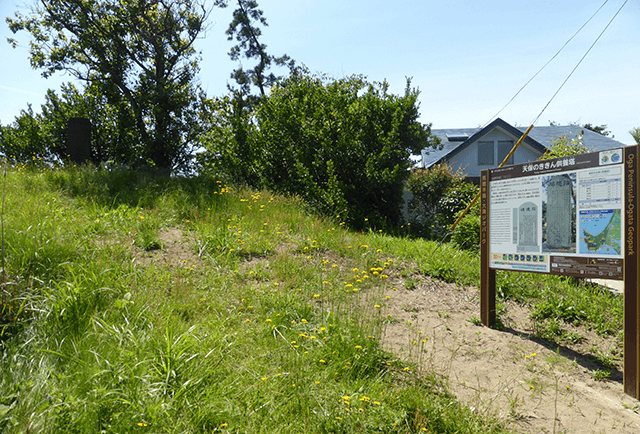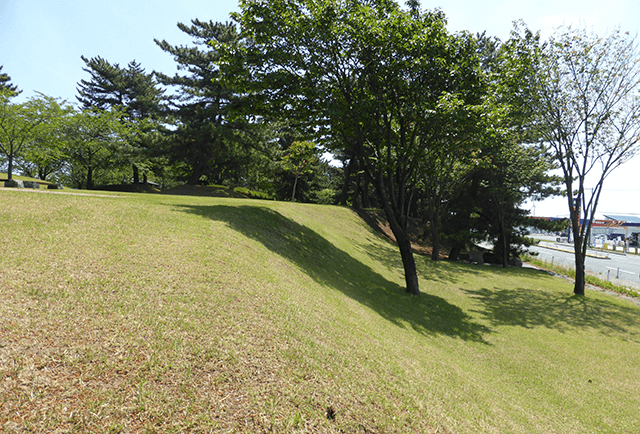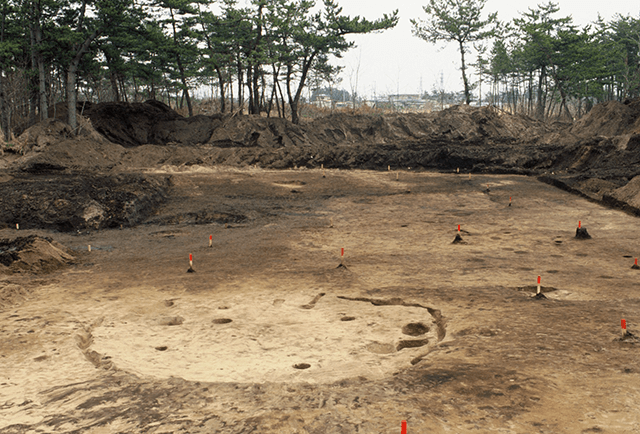-
title Tempo Famine Memorial Tower one word explanation Holding a memorial service on a sand dune overlooking the region keywords naturebeautifulhealing confirm, register Oga City Tangible Cultural Properties conservation laws and ordinances Oga City Ordinance for the Protection of Cultural Properties 
2,559 people starved to death on Oga Peninsula during the famine of 1833, the worst famine of the Edo period. The largest number of deaths was in Funakoshi, with 625 lives lost. This memorial tower was built in 1846 to honor the dead. As there is not much elevated land in Funakoshi, they must have chosen to build on this sand dune because it was the only place high enough to overlook the town. The tower is an important part of history that serves as a warning to future generations about the devastation of famine.
-
title Funakoshi Neighborhood Park one word explanation sand dunes in the relaxation garden keywords geologyhistorysearch confirm, register ー conservation laws and ordinances ー 
Built as a public recreation area in 1963, this park is famous for its cherry blossoms. Rising about 9m higher than the surrounding area, this sand dune was turned into a park, with the summit reserved for Shinmeisha Shrine and various stone monuments commemorating battles and shipwrecks of Hachirogata Lagoon.
-
title Yokonagane A site one word explanation Site from the Yayoi Period atop of sand dunes keywords historynaturesearch confirm, register Buried Cultural Properties (site) conservation laws and ordinances Act on Protection of Cultural Properties 
The Yokonagane A sites date from the middle of the Yayoi period (about 2400 years ago). Excavations have revealed the ruins of a pit house, as well as pottery and stone tools, and carbonized rice. In addition, there were traces of rice plants found in the earthenware. It is currently a residential area, but the ground is sandy soil. It is thought that people of this time lived and grew rice on the sand dunes that rise up above the surrounding area. Like the Shidonosawa site on the coast of Hachirogata Lagoon, this site is crucial to learning about the beginning of rice farming in Akita Prefecture.
Sand Dunes
Home >
What is the Oga Peninsula - Ogata Geopark? >
Geosites and spots >
south coast area >
Sand Dunes

